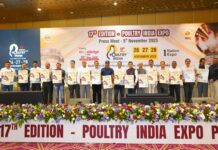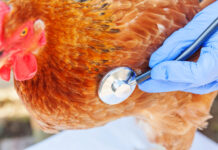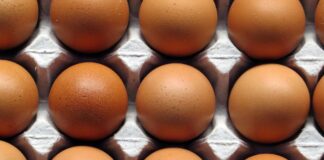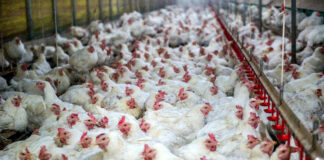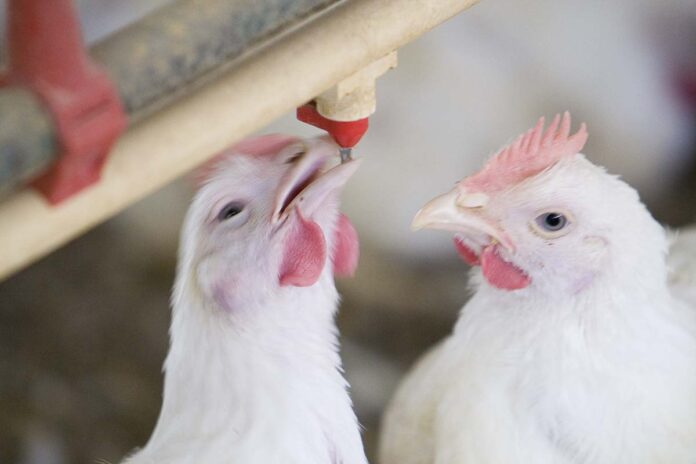
The history of the probiotic strain Lactobacillus acidophilus D2/CSL (CECT 4529) follows that of many strains produced by Centro Sperimentale del Latte and acts as a natural solution for gut health of reared poultry.
Since 1948, research has been at the heart of Centro Sperimentale del Latte’s work, which focuses on the isolation and selection of lactic acid bacteria (LAB) from their natural habitats (plants, animals, intestines, etc.). Once the preliminary selection phase has been completed, both in vitro and in vivo, the most promising microbial strains for use “in the field” are tested by the pilot laboratory, that is, selected again based on their ability to be successfully replicated on an industrial scale. All strains collected are kept in the CSL strain collection, and after 72 years of operation, the company boasts a collection of over 6,000 strains of lactic acid bacteria, a real record.
The history of the probiotic strain Lactobacillus acidophilus D2/CSL (CECT 4529) follows that of many strains produced by CSL and acts as a natural solution for gut health of reared poultry.
Discovery of the strain
L. acidophilus D2/CSL (CECT 4529)’s journey started in 1984-85 (Bianchi Salvadori B. et al., 1985) with the isolation of 19 lactic acid bacteria strains from the gastrointestinal tract of a healthy rural chicken: six strains were L. acidophilus, five were L. fermentum, four were L. salivarius, two were L. delbrueckii, one was L. helveticus and the final one was L. viridescens. During preliminary in vitro selection, the L. acidophilus strains seemed to be the most promising for probiotic use in poultry, mainly due to the rate of acidification on “chicken feed” medium and the ability to adhere to the gastrointestinal epithelium of chickens in the presence of bile. Further preliminary in vivo tests on Hubbard broilers confirmed the remarkable ability of the L. acidophilus and L. salivarius strains, administered as fresh washed cells, to colonise the gastrointestinal tract of chickens and improve the balance of the intestinal microbiota (Bianchi Salvadori B. et al., 1985). However, results of comparative tests in our pilot laboratory advocated for the L. acidophilus D2/CSL strain due to its superior performance in terms of amount of viable cells (CFU) collected after replication, centrifugation and lyophilisation. In short, out of the intestinal lactic acid bacteria strains isolated from chickens, L. acidophilus D2/CSL proved to be the most “robust” strain and the easiest to reproduce.
In vivo studies
L. acidophilus D2/CSL (CECT 4529) has undergone numerous small and large scale in vivo scientific studies. Some of these studies have been published while others have been made public through conferences or have not yet been published. Overall, this lactic acid bacterium boasts a remarkable wealth of evidence regarding its efficacy, especially on broilers and laying hens, and it can be administered via water or feed (Giardini A. et al., 1993; Giardini A. et al., 1994; Giardini A. et al., 1995; Gatto V., 2007; Gallazzi D. et al., 2008; Marelli S.P. et al., 2008; Cesari V. et al., 2012; Cesari V. et al., 2014; Forte C. et al., 2015; Forte C. et al., 2016; De Cesare A. et al., 2017; Forte C. et al., 2018; De Cesare et al., 2020).
In laying hens, better “gut health” (or eubiosis) due to L. acidophilus D2/CSL (CECT 4529) has led to significant improvements in terms of
- FCR (kg feed/kg eggs);
- egg production;
- egg quality (ESG, shell thickness, Haugh Units);
- saleable eggs (less egg wastage: dirty eggs, thin shelled, cracked, etc.);
- environment: reduction of volatile N compounds and faecal moisture within the poultry house.
In broilers, the improvements are measured in terms of:
- gut morphology (villus height);
- weight increment;
- FCR (Kg feed/kg weight increment);
- reduced morbidity and pasty vents;
- environment: reduction of volatile N compounds and faecal moisture within the poultry house.
Authorisation in the EU
After the EFSA was established (2002), CSL started the European authorization process to register Lactobacillus acidophilus D2/CSL (CECT 4529) as zootechnical feed additive, functional group 4/b, gut flora stabilisers. By definition, these additives “favourably affect animal production, performance or welfare, particularly by affecting the gastro-intestinal flora” (Regulation (EC) 1831/2003, art. 5, f).
The D2/CSL (CECT 4529) probiotic strain obtained its first European approval as an additive for laying hens in 2003, the second in 2007 and the third in 2015 (EU Regulation no. 2015/38). The most recent approval concerned broilers (EU Regulation no. 2017/2275). The product is authorised for administration via feed and drinking water at a minimum dose of 1*109 CFU/kg of feed and 5*108 CFU/L of water. There is no maximum dose as the D2/CSL (CECT 4529) strain has QPS status and is therefore absolutely safe for the animals, consumers and the environment (EFSA Journal, 2014, 12,7:3789).
Identikit of the strain
We know that farmed poultry are constantly subject to intestinal dysbiosis which can lead to a severe disease (acute inflammation) or, more frequently, subclinical conditions associated with low yield (growth, egg production, FCR), lack of growth uniformity, and poor quality of egg produced (faecal stains, thin shells, breakages, etc.). Furthermore, this dysbiosis, as well as having a negative impact on the gastrointestinal function, vitality and productivity of the animals, lowers the environmental quality within the poultry house (increased humidity, ammonia and pathogens of faecal origin) and reduces hygiene safety levels of both meat and eggs (increase in pathogenic microbial loads). Restoring the balance of the intestinal microbiota (that is, the eubiosis) is achieved naturally through the administration of indigenous autochthonous strains of lactic acid bacteria, i.e. selected from the gut of chickens.
Today, 35 years since its discovery and with the support of a substantial body of in vitro and in vivo trial data, we can confirm that the Lactobacillus acidophilus D2/CSL (CECT 4529) strain is:
* a natural ally to the chicken gut: it colonises and lives in symbiosis in the gastrointestinal habitat, stimulating the GALT and supporting the naturally occurring microbiota to the chick;
* a leader of useful fermentations: it improves gastrointestinal function by fermenting carbohydrates (not amino acids) and producing lactic acid, which is an additional source of energy for the host;
*a natural antagonist of proinflammatory, putrefactive and pathogenic bacteria (coliform and clostridia in particular) and thus prevents gut dysbiosis and inflammation, and diarrhoea.
Three important considerations
- L. acidophilus D2/CSL (CECT 4529) is one of the first indigenous bacteria to colonise the gut in chicks, creating a favourable habitat for the establishment of a more balanced microbiota;
- each flock is composed by a mix of “healthy”, “sub-clinically ill”, and “clinically ill” birds. The primary aim of feeding birds with L. acidophilus D2/CSL (CECT 4529) is to prevent or resolve the gastro-intestinal dysbiosis, namely to protect the “healthy” birds (prophylaxis) and/or “sub-clinically ill” birds (metaphylaxis); this is why we see an increase in the overall performance of the group as well as the quality of the produce;
- the dose of L. acidophilus D2/CSL (CECT 4529) must be high enough to positively “infect” the host. If you use a low dose, you will not see a “cause-effect” relationship because you have generated an “asymptomatic carrier”!
“Antibiotic-free” production
As we know, L. acidophilus D2/CSL (CECT 4529) is a completely safe microorganism which leaves no toxic residue in poultry products and can even be used on organic farms. The use of this probiotic strain meets the needs of modern consumers, who are looking for products from “antibiotic-free” farms, i.e. animals reared without using antibiotics.
For more information please visit: www.saccosystem.com
Email: info@saccosystem.com


